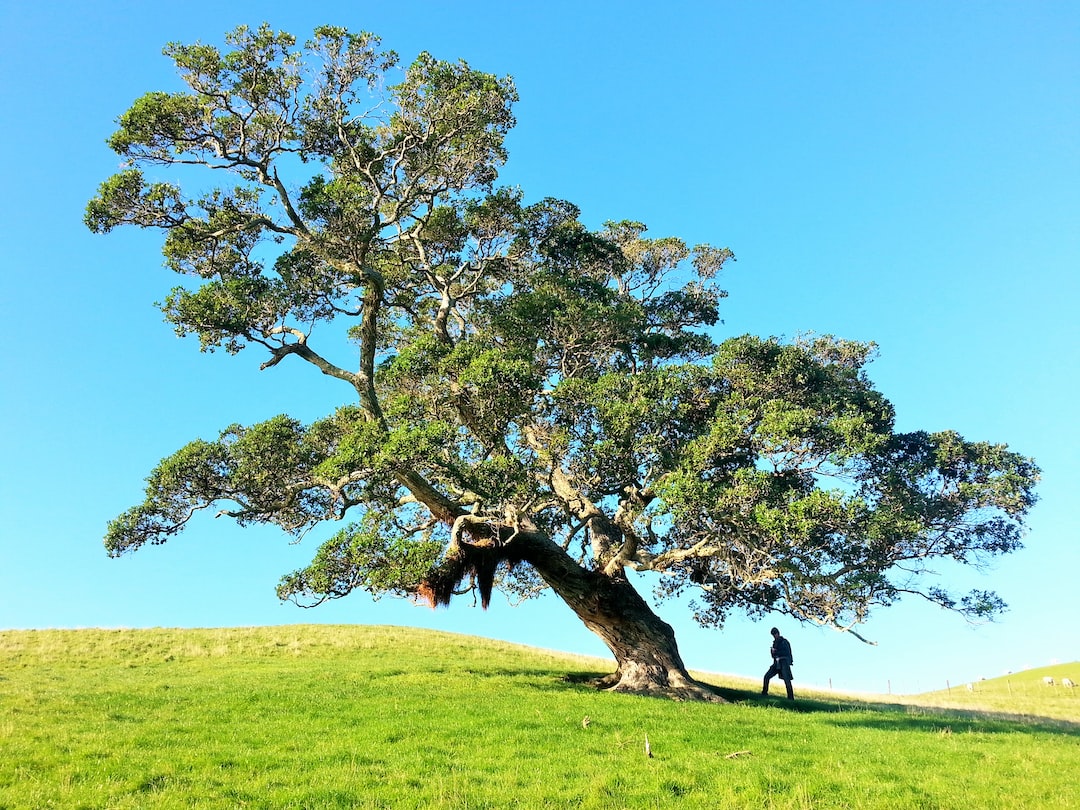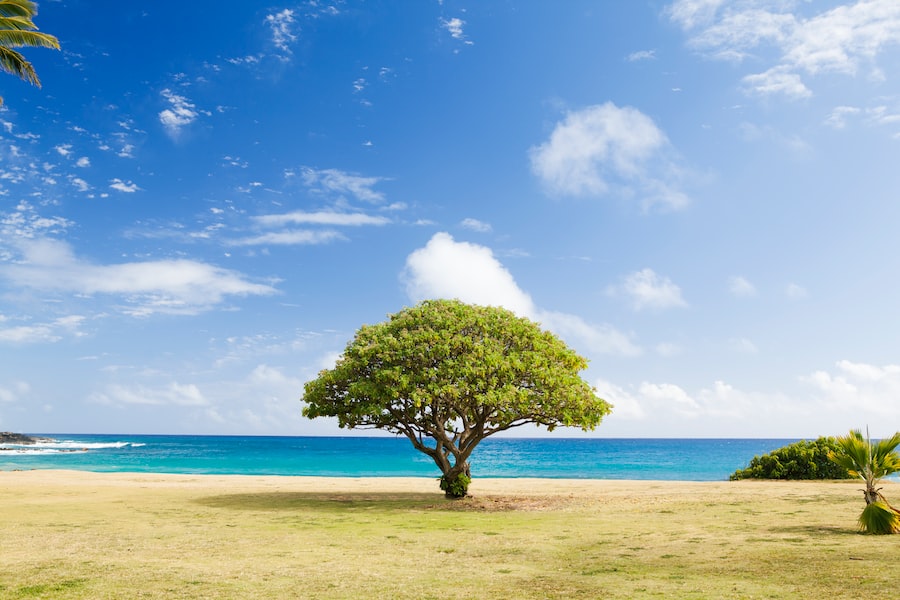From Seed to Fruit: A Guide to Growing Your Own Plum Tree

Growing your own plum tree can be a rewarding and fulfilling experience. Not only does it provide you with a beautiful addition to your garden, but it also offers a host of benefits. One of the main advantages of growing your own plum tree is the ability to enjoy fresh, homegrown plums. These plums are not only delicious but also packed with nutrients and health benefits.
Plums are a rich source of vitamins, minerals, and antioxidants. They are low in calories and high in fiber, making them a great addition to a healthy diet. Eating fresh plums can help improve digestion, boost the immune system, and promote healthy skin. Additionally, plums contain compounds that have been shown to have anti-inflammatory and anti-cancer properties.
Key Takeaways
- Growing your own plum tree can provide fresh, delicious fruit and be a rewarding experience.
- Choosing the right plum tree variety for your climate is crucial for successful growth.
- Properly preparing the soil and planting your plum tree is important for its health and growth.
- Watering and fertilizing your plum tree regularly can help it reach its full potential.
- Pruning your plum tree can increase fruit production and protect against disease.
Choosing the Right Plum Tree Variety for Your Climate
When choosing a plum tree variety, it is important to consider your climate and growing conditions. Plum trees come in a variety of types, each suited to different climates and regions. Factors to consider when choosing a plum tree variety include the average temperature range, humidity levels, and chilling hours required for the tree to produce fruit.
Some of the best plum tree varieties for different climates include:
– European plums: These varieties are well-suited to cooler climates with cold winters and mild summers. They require a certain number of chilling hours in order to produce fruit.
– Japanese plums: These varieties thrive in warmer climates with mild winters and hot summers. They require fewer chilling hours compared to European plums.
– American plums: These varieties are native to North America and are well-adapted to a wide range of climates. They are hardy and can tolerate colder temperatures.
Preparing the Soil and Planting Your Plum Tree
Before planting your plum tree, it is important to prepare the soil properly. Plum trees prefer well-draining soil that is rich in organic matter. Start by removing any weeds or grass from the planting area. Then, loosen the soil with a garden fork or tiller to a depth of at least 12 inches. Add compost or well-rotted manure to improve the soil’s fertility and drainage.
When planting your plum tree, dig a hole that is wide and deep enough to accommodate the tree’s root system. Place the tree in the hole, making sure that the bud union (the swollen area where the tree was grafted onto the rootstock) is above ground level. Backfill the hole with soil, firming it gently around the roots. Water the tree thoroughly after planting to settle the soil.
Watering and Fertilizing Your Plum Tree for Optimal Growth
| Watering and Fertilizing Your Plum Tree for Optimal Growth | |
|---|---|
| Watering frequency | Once a week |
| Amount of water per watering | 1-2 inches |
| Best time to water | Morning or evening |
| Type of fertilizer | Slow-release granular fertilizer |
| When to fertilize | Early spring and late fall |
| Amount of fertilizer per application | 1 pound per inch of trunk diameter |
Proper watering is essential for the growth and health of your plum tree. Plum trees require regular watering, especially during dry periods. The frequency and amount of water needed will depend on factors such as temperature, rainfall, and soil type. As a general rule, water your plum tree deeply once a week, providing enough water to moisten the soil to a depth of at least 12 inches.
In addition to regular watering, fertilizing your plum tree can help promote optimal growth and fruit production. Apply a balanced fertilizer in early spring before new growth begins. Follow the manufacturer’s instructions for application rates and timing. Avoid over-fertilizing, as this can lead to excessive vegetative growth at the expense of fruit production.
Pruning Your Plum Tree for Maximum Fruit Production
Pruning is an important aspect of plum tree care that helps promote maximum fruit production. Pruning helps maintain the shape and size of the tree, improves air circulation and sunlight penetration, and removes dead or diseased wood.
The best time to prune plum trees is during late winter or early spring before new growth begins. Start by removing any dead or damaged branches. Then, thin out the interior of the tree to improve air circulation and sunlight penetration. Finally, prune back any long or overgrown branches to maintain the desired shape and size of the tree.
Protecting Your Plum Tree from Pests and Diseases

Plum trees are susceptible to a variety of pests and diseases that can affect their health and fruit production. Common pests that affect plum trees include aphids, plum curculio, and plum moth. Diseases that can affect plum trees include brown rot, bacterial canker, and powdery mildew.
To prevent pest and disease problems, it is important to practice good sanitation in your garden. Remove any fallen leaves or fruit from around the base of the tree, as these can harbor pests and diseases. Monitor your plum tree regularly for signs of pests or diseases, and take appropriate action if necessary. This may include using organic pest control methods or applying fungicides as recommended.
Harvesting Your Plum Tree: When and How to Pick Your Fruit
Knowing when to harvest your plums is important to ensure that they are ripe and flavorful. Plums are typically ready for harvest in late summer or early fall, depending on the variety and climate. The best way to determine if a plum is ripe is by its color and firmness. Ripe plums should have a deep, rich color and give slightly when gently squeezed.
To harvest your plums, gently twist or pull them from the tree. Be careful not to damage the fruit or the branch. Place the harvested plums in a basket or container, being careful not to stack them too high to avoid bruising. Once harvested, plums can be stored at room temperature for a few days or refrigerated for longer storage.
Storing and Using Your Plum Harvest: Preserving, Baking, and More
If you have a bountiful plum harvest, you may want to consider preserving some of the fruit for later use. Plums can be preserved in a variety of ways, including canning, freezing, and making jams or jellies. Canned plums can be used in pies, tarts, or as a topping for yogurt or ice cream. Frozen plums can be used in smoothies, baked goods, or as a topping for pancakes or waffles.
Fresh plums can also be used in a variety of recipes. They can be baked into pies, tarts, or crumbles, or used to make plum sauce or chutney. Plums can also be added to salads, grilled as a side dish, or used to make refreshing summer drinks.
Troubleshooting Common Plum Tree Problems
Plum trees can face a variety of problems that can affect their health and fruit production. Some common problems that plum trees may encounter include:
– Brown rot: This fungal disease causes brown spots on the fruit and can lead to rotting. To prevent brown rot, remove any infected fruit and improve air circulation around the tree.
– Plum curculio: This insect pest lays its eggs in the fruit, causing it to become deformed and drop prematurely. To control plum curculio, monitor your tree regularly and apply appropriate insecticides as recommended.
– Aphids: These small insects feed on the sap of the tree and can cause stunted growth and distorted leaves. To control aphids, spray your tree with a strong stream of water or apply insecticidal soap.
Final Thoughts: Enjoying the Fruits of Your Labor
Growing your own plum tree can be a rewarding and enjoyable experience. Not only do you get to enjoy the beauty of the tree in your garden, but you also get to savor the delicious and nutritious fruits it produces. By choosing the right variety for your climate, properly preparing the soil, and providing adequate care and maintenance, you can ensure the success of your plum tree and enjoy the fruits of your labor for years to come. So why not give it a try and start growing your own plum tree today?
If you’re interested in learning how to grow a plum tree from a seed, you might find this article from Lawn World helpful. They provide a step-by-step guide on the process, including tips on selecting the right seed, preparing the soil, and caring for the young tree. Check out their comprehensive guide here to start your own plum tree journey.
FAQs
What is a plum tree?
A plum tree is a fruit-bearing tree that belongs to the Rosaceae family. It produces small, sweet, and juicy fruits called plums.
Can you grow a plum tree from a seed?
Yes, you can grow a plum tree from a seed. However, it may take several years before the tree produces fruits.
When is the best time to plant a plum seed?
The best time to plant a plum seed is in the fall or early winter when the tree is dormant.
How do you prepare a plum seed for planting?
To prepare a plum seed for planting, you need to remove the flesh from the seed and wash it thoroughly. Then, dry the seed for a few days before planting.
What type of soil is best for growing a plum tree?
A well-draining soil that is rich in organic matter is best for growing a plum tree. The soil should also have a pH level between 6.0 and 7.0.
How often should you water a plum tree?
A newly planted plum tree should be watered deeply once a week. Once the tree is established, it should be watered deeply every two to three weeks.
How long does it take for a plum tree to produce fruits?
It may take several years before a plum tree grown from a seed produces fruits. However, grafted plum trees may produce fruits within two to three years.
How do you care for a plum tree?
To care for a plum tree, you need to prune it regularly, fertilize it once a year, and water it deeply during dry spells. You should also protect the tree from pests and diseases.



